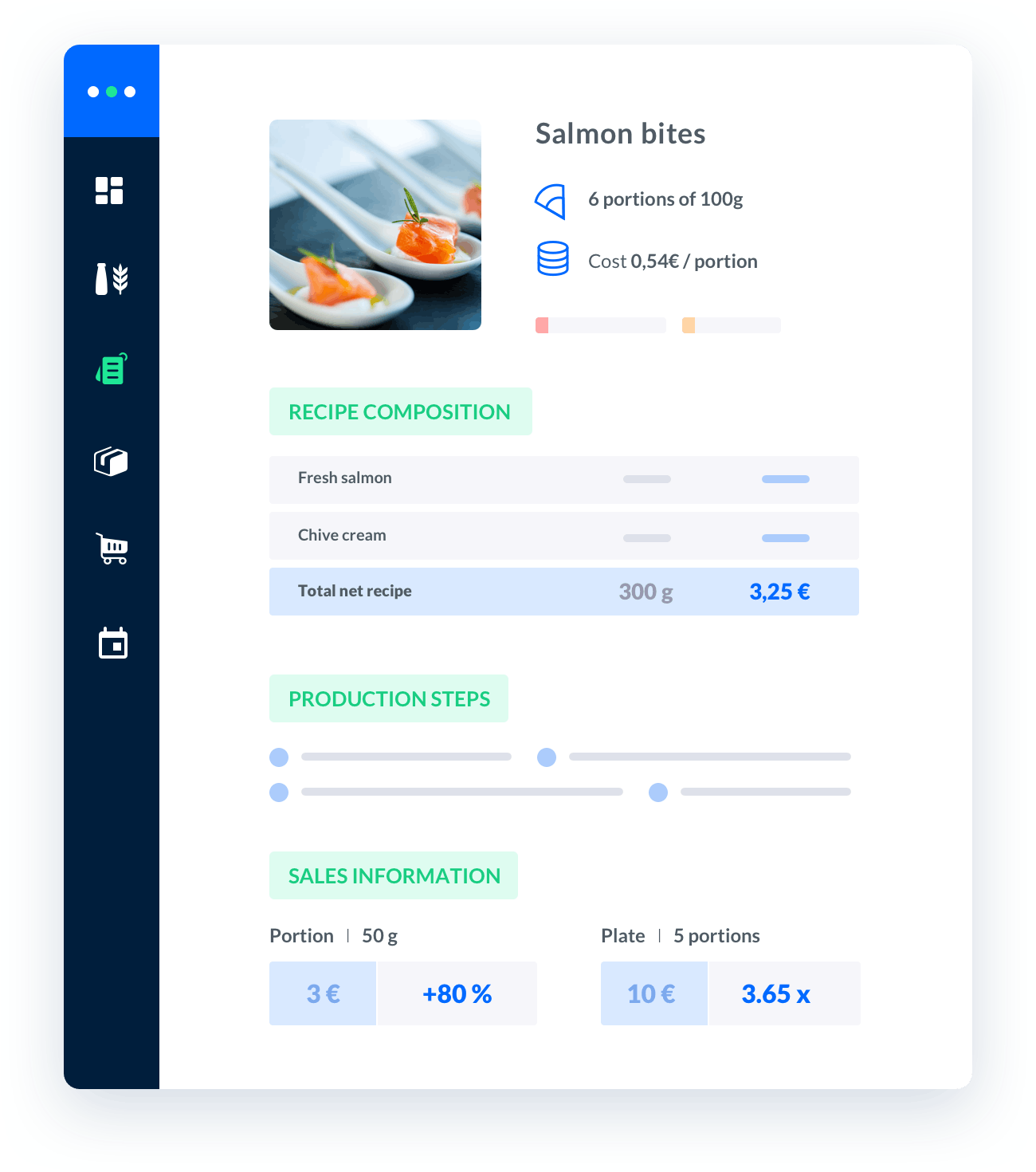menu cost calculator
Are you in the catering industry and need to calculate menu costs?Look no further!

Melba: the food cost app to optimize the profitability of your restaurant
Discover how to optimize the profitability of your restaurant with melba

The ultimate guide to food cost restaurant
Learn more about the food cost basis and how to reduce your food cost percentage
Are you in the catering industry and need to calculate menu costs? Look no further! In this comprehensive guide, we will walk you through the process of using a menu cost calculator. Whether you run a restaurant, a catering service, or any other food-related business, understanding the costs associated with your menu items is crucial for profitability and success.
What is a Menu Cost Calculator?
A menu cost calculator is a tool that helps you determine the overall cost of each menu item by taking into account various factors such as ingredient costs, labor costs, overhead expenses, and desired profit margins. It provides you with accurate cost calculations, allowing you to set appropriate prices for your menu items and make informed decisions about your business.
1. Ingredient Costs
The first step in using a menu cost calculator is to gather information about the costs of the ingredients used in your recipes. This includes not only the cost of purchasing the ingredients but also any additional expenses such as shipping or handling fees. It's important to be as detailed as possible when entering this information to ensure accurate calculations.
2. Labor Costs
Next, you need to consider the labor costs associated with preparing each menu item. This includes the wages of chefs, cooks, and other kitchen staff involved in the food preparation process. You can calculate labor costs by determining the average time it takes to prepare each menu item and multiplying it by the hourly wage of the staff members involved.
3. Overhead Expenses
In addition to ingredient and labor costs, you also need to factor in overhead expenses. These are the costs that are not directly tied to a specific menu item but are necessary for running your business. Examples of overhead expenses include rent, utilities, insurance, and marketing costs. To calculate the overhead cost per menu item, divide the total monthly overhead expenses by the number of menu items you offer.
Using a Menu Cost Calculator
Now that you have gathered all the necessary information, it's time to use a menu cost calculator to determine the cost of each menu item. There are several online tools and software available that can help you with this task. Simply input the ingredient costs, labor costs, and overhead expenses into the calculator, and it will generate the total cost per menu item for you.
1. Benefits of using a Menu Cost Calculator
Using a menu cost calculator offers several benefits for catering professionals:
- Accurate Cost Calculation: The calculator takes into account all the relevant factors and provides you with accurate cost calculations, eliminating any guesswork.
- Profitability Analysis: By knowing the cost of each menu item, you can analyze the profitability of your offerings and make informed pricing decisions.
- Menu Optimization: The calculator helps you identify menu items that have high costs and low profit margins, allowing you to optimize your menu for better profitability.
- Cost Control: With a clear understanding of the costs associated with your menu items, you can implement cost control measures to reduce expenses and increase profitability.
2. Tips for Using a Menu Cost Calculator
Here are some tips to make the most out of your menu cost calculator:
- Keep Ingredient Costs Updated: Regularly review and update ingredient costs to ensure accurate calculations. Prices may fluctuate, so it's important to stay up to date.
- Consider Seasonal Variations: If your menu includes seasonal ingredients, adjust the costs accordingly to reflect the variations in pricing throughout the year.
- Include Indirect Costs: Don't forget to include indirect costs such as packaging materials or garnishes that may be necessary for certain menu items.
- Analyze Menu Performance: Regularly analyze the performance of your menu items to identify best-sellers, high-margin items, and underperforming dishes. Use this information to make informed decisions about your menu offerings.
In conclusion, a menu cost calculator is an essential tool for catering professionals to accurately determine the costs associated with their menu items. By using this tool, you can make informed decisions about pricing, menu optimization, and cost control, ultimately leading to improved profitability and success in the catering industry.






